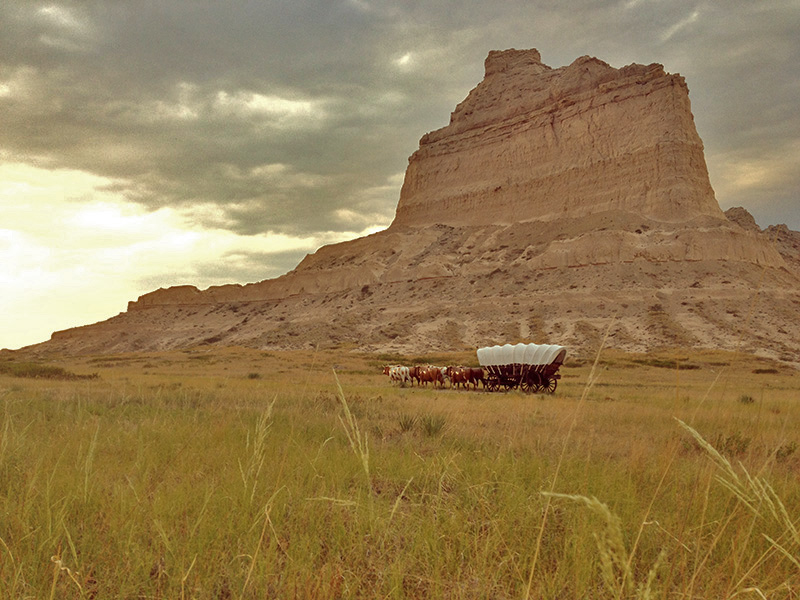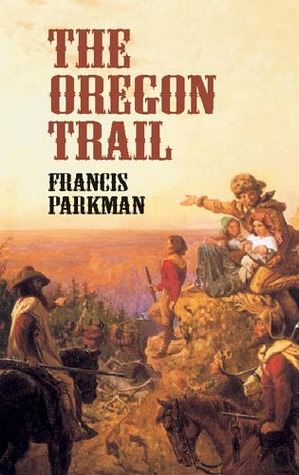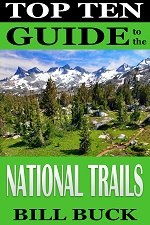The National Trails System is a Congressionally-established network that preserves routes like the Oregon National Historic Trail — a living monument that stretches 2,000 miles across the country and offers countless opportunities for adventurous travelers to experience the vastness of the West.
The Oregon Trail is a front-row seat to one of America’s most enduring legends, a book written in the 1840s that offers modern-day readers a first-hand, visceral account of the Oregon Trail. Author Francis Parkman introduces us to a unique and diverse cast of characters during his wild journey in the summer of 1846 — a time when prevailing attitudes were not typically generous.
The author began his journey as colorful reports from the Oregon Trail spread to his hometown of Boston, Massachusetts. Parkman and a young friend decided to head out the next summer. They joined a large party of emigrants, French-Canadian trappers and hapless trail guides to set out from the Missouri state line. Unlike most historical nonfiction, this book offers an honest, gritty account of events as they happened. It doesn’t tend to sugar-coat the events or opinions of participants and stands as a cold hard look at the actual conditions on the ground — oftentimes with humor.
Parkman came from a relatively refined, intellectually curious Boston upbringing, which creates an interesting contrast with the muddy trail he travels. It’s important to note that the author is an experienced outdoorsman, having explored his New England region extensively as a youth. He wrote this book in his mid-twenties and sometimes displays a lack of mature analysis yet his youthful exuberance provides the most enjoyable elements of the book. A sense of unrestrained freedom, an adventurous young man experiencing the West for the first time, urges the reader on.
This book and its author stand among the great examples of early adventure travel writing in an expanding America.
The Oregon Trail route originated thousands of years earlier as a game trail, then an Indian trading route. It had been used by explorers, mountain men and fur trappers in the early 1800s, but only in Parkman’s time was the route beginning to be traveled by wagon train. Settlers and traders embarked upon the Oregon Trail in vast numbers, pursuing a better life in the West. The rough path they followed had to be documented by someone like Parkman.
His well-written journal entries serve as the basis for Parkman’s story and provide readers with a powerful sense of daily life and the odd rituals of the trail. The book plunges into the realities of heading out into the unknown in 1846 to a place where the smells of unkempt men long on the trail, whiskey-soaked revelries at random occasions, and countless irritations like mud traps, mosquitoes, snakes, and other challenges faced every traveler:
He will find himself beset with “varmints” innumerable. The wolves will entertain him with a concert at night, and skulk around him by day … his horse will step into badger-holes; from every marsh and mud-puddle will arise the bellowing, croaking, and trilling of legions of frogs, infinitely various in color, shape and dimensions. A profusion of snakes will glide away from under his horse’s feet, or quietly visit him in his tent at night; while the pertinacious humming of unnumbered mosquitoes will banish sleep from his eyelids.” -The Oregon Trail
In entries such as this, The Oregon Trail soars beyond the prose of mere travel writing and shares a journalistic account of the West in 1846 including sociological, cultural and ecological observations. Travelers prepared and outfitted for the journey in towns and cities along the frontier borders and set out for the great beyond — where they were soon viewing corpses and hastily crafted tombstones of young children who had fallen along the trail. The varied conditions of the tribes along the route are also documented with unique details. The truth for anyone who continued on to the route’s conclusion in Oregon and California — such as the Donner party of that same year — was to be grueling and many times deadly.
This book provides an opportunity in the never-ending quest to find insight into the collision of European-Americans and indigenous people, as it shows how hungry emigrants were for opportunity and how this conflict was ultimately experienced by Native America. In spite of Parkman’s (at times) controversial views — including evidence of intolerance which was common in that era — he dives deep to describe the diverse people who plied the trail and the cultural traits and demeanor of representatives of various tribes he encounters. There was clearly a rich collection of cultures who all shared this trail and its environs during this era.
Traffic on the Oregon Trail — which had served as a virtual interstate of its time — came lurching to a halt in 1869 after the Transcontinental Railroad was completed. The trail’s journey, which lasted up to six months, costing many hundreds of dollars and killing thousands, was now just a week by rail. Tickets could be easily purchased by the average American. The unique, historic image of the emigrant wagon trains filling the wide prairie — rough-hewn history of today’s Oregon National Historic Trail — remains immortalized in the pages of The Oregon Trail.



